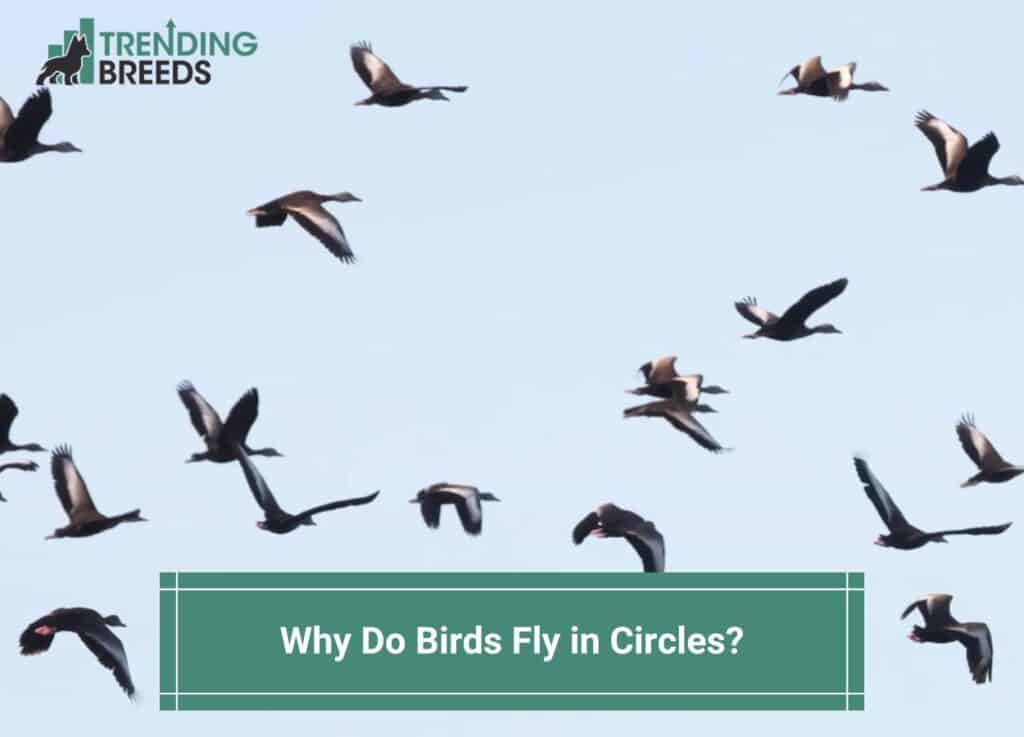
Birds take many flight patterns throughout the year. You may have seen them flying in a v formation in the fall. But what if they are circling around? Why do birds fly in circles?
Flying in circles helps birds save their energy by using thermals.
They may also just be searching for food. Furthermore, birds will often fly in circles to confuse predators before they head home.
Before you scroll further down this guide, check out these other bird-related articles: Are Birds Carnivores? and Why Do Birds Dance to Music?.
Table of Contents
Which Types of Birds Fly in Circles?

Vultures, condors, and other great soaring birds of prey like buzzards, eagles, and hawks are known for their circling flight patterns.
These predators can be spotted soaring into the air at great heights, seemingly unfazed by the absence of air resistance.
Circular flight gives scavenging birds like vultures and condors a better overview of large areas, allowing them to search for dead animals and suitable feeding grounds more efficiently.
When disturbed, pigeon flocks may take to the air and circle until they determine it is safe to return to the ground or surrounding trees for another meal.
Some birds, like starlings, fly in vast groups called murmurations, while others, like wagtails and blackbirds, engage in synchronized flying in patterns that can be either circular or elliptical.
Pelicans use thermals to their advantage throughout their long migration journeys, reaching up to 56 km/h (35 mph) at altitudes of up to 3000 m (9850 ft).
They often engage in prolonged circular soaring to rest their wings and survey large ocean regions for fish.
Why Do Groups of Birds Fly in Circles?
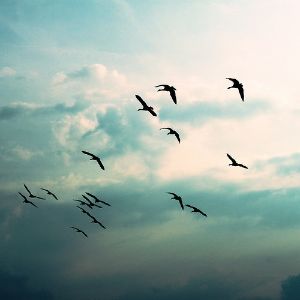
It’s been hypothesized that flocks of birds are safer against predators than individuals. Birds that don’t travel in flocks are easier prey for birds of prey.
The chances of a successful kill are diminished when a predator is confronted by a large flock of birds flying in a seemingly random circular or elliptical whirling motion.
Circular group flight may also be used to add more individuals to an already established flock, related to the idea of safety in numbers.
Murmuration, most common around dusk, typically begins as a small group of birds and grows to include dozens or hundreds as they work together to maximize their chances of survival by flying in groups.
It is unusual to see birds of prey like hawks, buzzards, and eagles flying in tight formations; instead, these birds are typically solitary hunters who take advantage of the advantages of thermal currents on their own.
Reasons Why Birds Fly in Circles
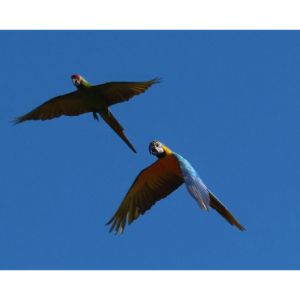
Birds often fly in a circular pattern for a variety of reasons. This section will explore the various explanations for the cyclical flight patterns of bird flocks.
Using Thermals
Most flocking behavior occurs between the morning and the middle of the day. They can accomplish this because the air is warmer due to thermals at that time. This enables the birds to circle freely without using their wings.
The birds expand their wings to take advantage of the thermals, allowing them to fly without using any energy generally required for flight.
Birds must fly in a circular pattern to maintain their body temperature within an acceptable range.
Warm air lifts birds into the air, but not all birds take advantage of this. Not all bird species loop the loop to take advantage of the thermals.
Before the Storm
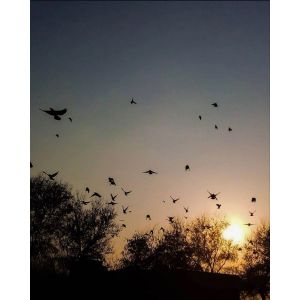
It’s a well-known fact that birds will fly in circles before a storm because they can accurately predict the impending change in the weather.
Birds will maintain their composure even in the face of threatening weather.
They make a circular flight pattern before finding a secure landing spot. They would be better off finding refuge before the storm hits to save time and energy.
Looking for Food
Have you ever traveled to a big city and seen pigeons peeking through garbage and leftovers? They never stop eating. Or maybe you’ve seen recurring visitors at your bird feeder.
Birds have a high metabolic rate, yet they can’t rely on reserves (burning excess fat) for long. That means birds need to eat to continue to be alive, and yes, that means they defecate, as anyone with a bird feeder can testify to.
Birds will soar overhead in search of suitable feeding and watering holes. If you look up and notice a cardinal circling, it could be hunting for some tasty fruits or bugs.
They can conserve energy by circling an area before deciding whether or not to dive down and back up for food or water. Birds require water just as much as they need food, and in arid regions, this may necessitate aerial searches for water sources such as lakes, streams, and ponds.
One helpful piece of advice for new birdwatchers is to go close to water sources like ponds and lakes, especially if you live in a dry area. Then you may snap a pic while they’re replenishing their energy!
Throw Off Potential Predators
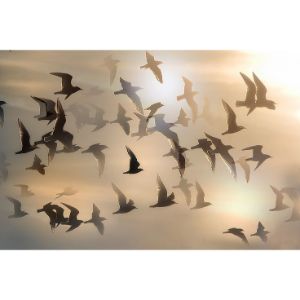
There are several potential threats to birds, including larger birds. For this reason, it is a clever strategy to fly in tight formations and in a circular pattern to throw off the predators.
When many birds are in the air and circling at once, it is difficult for predators to zero in on any one of them.
Navigation
A flock of birds flying in circles might be trying to find their way home. Birds, especially those on migration, are prone to becoming lost while trying to find their way. To find their way again, they use a disk-shaped flight pattern.
Catch the Updrafts
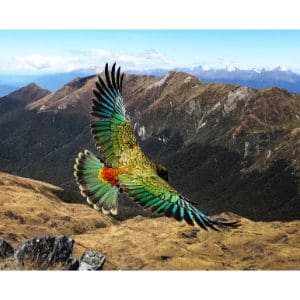
Flying in groups isn’t the norm for all avian species. In addition, some of the birds that are found singly, in pairs, or in small groups will fly in a circular pattern to catch a rising air updraft.
The warm air helps them discover updrafts to soar high above. This is typically done by larger birds that are capable of long, high flights.
During Migration
It’s common for migratory birds to cover thousands of miles in one season. Birds migrate in the autumn to either warmer regions, have more food, or can be used for nesting.
This is a laborious and time-consuming process for the birds, and it can be very taxing on their energy levels!
Before continuing their journey, it is not unusual for migratory birds to take a little break, during which they would softly circle the sky in a circling motion to conserve some of their energy.
Our feathered friends can save themselves effort by not coming to a complete stop but continuing to soar in circles instead of descending to the ground and ascending again.
To Save Energy
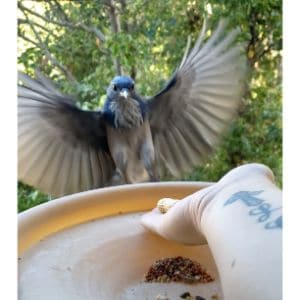
Birds often need to cover large distances for migration or in search of food. This is a time-consuming task that takes up much of their energy.
Flying in circles helps birds save some of their precious energy.
All they need to do is spread their winds and glide instead of continually flapping their wings and using some precious energy resources. The air currents will ensure that they keep flying.
Birds that Use Thermals to Fly
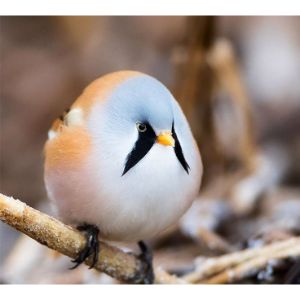
Birds of all species use thermals, or streams of rising air, although some do so more frequently than others. Seventy-five percent of North American bird species migrate yearly, covering hundreds to thousands of miles.
Migratory birds rely on thermals to get where they need to go; otherwise, they would have to expend unnecessary energy flapping their wings the whole way.
Here are some birds that use thermals.
Pelicans
Expert thermal flyers, these fish-eating birds can often be spotted along the shore.
Pelicans perform a two-stage migration: first, to the north for the winter and again in the spring and summer when warmer waters have returned.
Because these birds must cover great distances, they rely on thermals to help them get from one place to another without being too tired to fly.
The broad wingspan of a pelican allows it to ride thermals at speeds of up to 35 miles per hour, allowing it to reach the warmer climates of Mexico and Panama with very little effort.
Canadian Geese
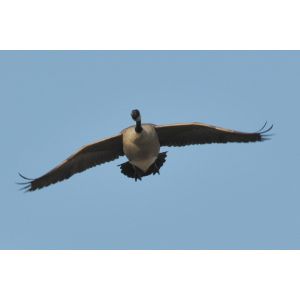
These geese travel great distances to breed; their name comes from their traditional breeding grounds in Canada. During the winter, they migrate to the southern and central parts of the United States.
Because they are traveling such great distances, they need to be able to efficiently use the thermals.
They often travel greater distances by flying in a tight formation, especially when taking advantage of the lift provided by thermals.
When taking advantage of thermals, larger birds like geese perform better than smaller birds like robins because their wider wingspans allow them to spread out and soar more easily and quickly.
Crows
Crows, in our opinion, are always the most commonly seen flying birds in the sky. These birds have strong wings and can soar to thermals at altitudes of several thousand feet.
Similar to eagles, they benefit from being somewhat large, making it easier for them to use thermals to soar into the air.
The number of bird species that can fly with only thermals is enormous. It makes perfect sense for birds to use strong air currents when migrating hundreds or thousands of miles.
Frequently Asked Questions
What causes a murmuration of birds?
A murmuration of birds makes it easier for flocks of birds to avoid predators.
Can birds tell when a storm is coming?
Birds feel the drop in pressure before a storm, so yes, they can tell something is happening.
What do birds do before a tornado?
Before a tornado, birds will fly low to the ground and seek shelter in bushes and covered areas.
So Why Do Birds Fly in Circles?

It can be quite fascinating to look at a group of magnificent birds flying in the sky.
There are a couple of different reasons behind this behavior. And now that you know the reasons for this behavior, you can enjoy the scenery even more.
If you find this guide, “Why Do Birds Fly in Circles,” informative and helpful, you can check out these other animal-related articles from our team:
You can learn more about this topic by watching “Why Do Birds Fly in Circles? – EarthyKnowHow Explains!” down below:




